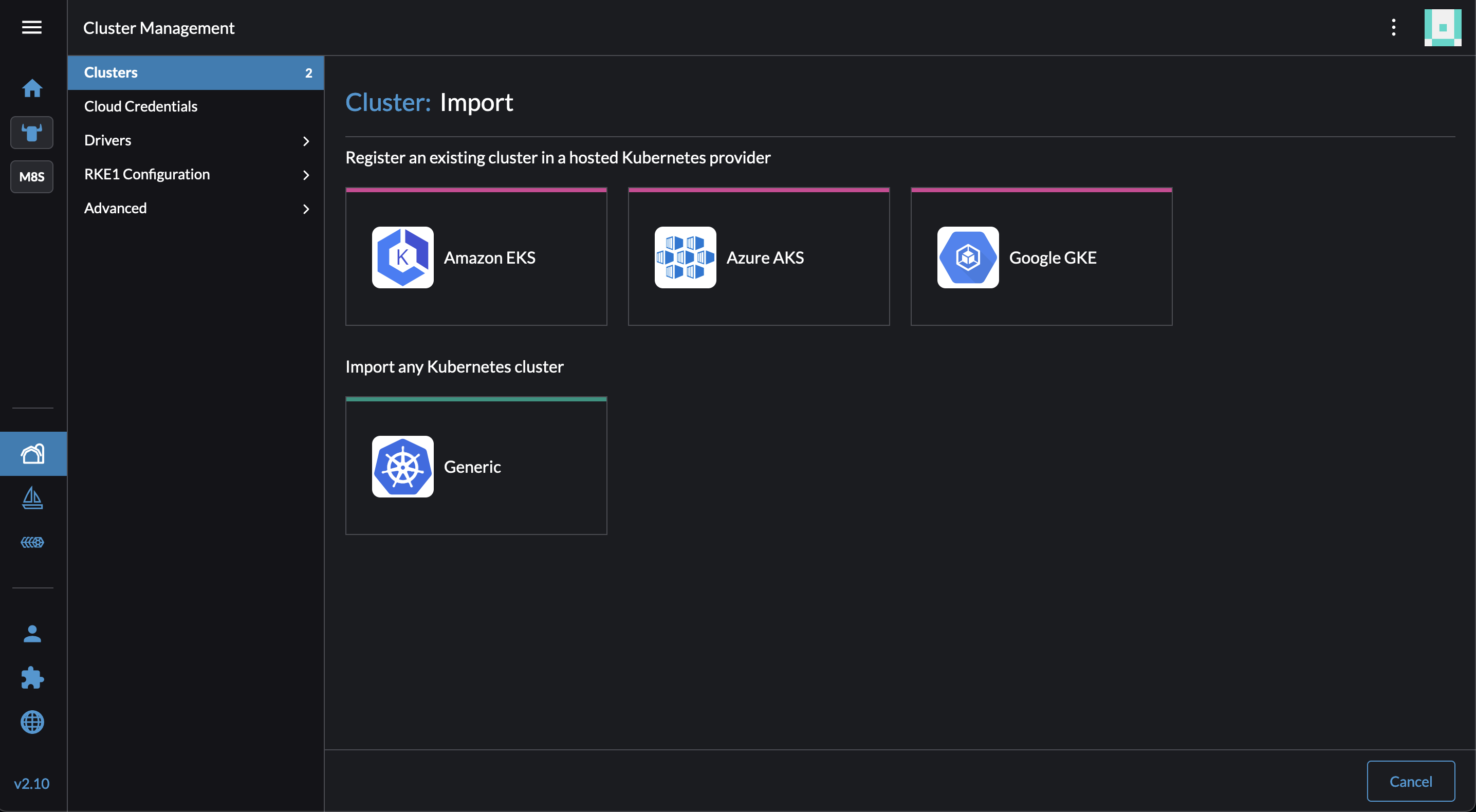Rancher in k8s
Introduction
In recent years, Kubernetes has become the de facto standard for container orchestration and management. As more and more organizations adopt Kubernetes, the need for robust management solutions has become increasingly important. Rancher, a powerful open-source platform, provides enterprise-grade Kubernetes management capabilities. In this blog post, we will explore the features and benefits of Rancher in helping organizations effectively manage their Kubernetes clusters.
- Comprehensive Management Platform
- Enhanced Security and Compliance
- Seamless Multi-Cluster Management
Get Started
Installing Rancher with Docker
sudo docker run --privileged -d --restart=unless-stopped -p 80:80 -p 443:443 rancher/rancher
Import existing k8s cluster

Other Multicluster Management Tools
- Open Cluster Management (OCM)
- Gardener
- Headlamp
Managing Multiple Clusters Best Practices
- Limit the blast radius of your clusters to prevent cascading failures from impacting your applications more broadly.
- For regulatory requirements like PCI, HIPAA, or HiTrust, consider using separate clusters to simplify the separation of regulated and general workloads.
- Deploy workloads to dedicated clusters when hard multitenancy is a business requirement.
- Use a Global Load Balancer to manage traffic between clusters when multiple regions are needed for your applications. Separate specialized workloads like HPC into individual clusters to meet their specific requirements.
- When deploying workloads across multiple regional datacenters, establish a data replication strategy first. While managing multiple clusters across regions is straightforward, data replication can be complex—plan carefully for both asynchronous and synchronous workloads.
- Use Kubernetes operators like the prometheus-operator or Elasticsearch operator to automate operational tasks.
- Consider service discovery and inter-cluster networking when designing your multicluster strategy. Service mesh tools like HashiCorp’s Consul or Istio can facilitate cross-cluster networking.
- Ensure your CD strategy supports multiple rollouts across regions or clusters.
- Consider adopting a GitOps approach to maintain consistency across your cluster fleet. While GitOps may not suit every environment, evaluate it as a way to reduce the operational overhead of managing multiple clusters.
Reference
https://more.suse.com/fy21-global-web-landing-page-how-to-build-enterprise-kubernetes-strategyhttps://rancher.com/docs/https://www.rancher.com/https://open-cluster-management.io/https://gardener.cloud/https://headlamp.dev/https://github.com/headlamp-k8s/headlamp
Some of the content is generated by AI, please be cautious in identifying it.